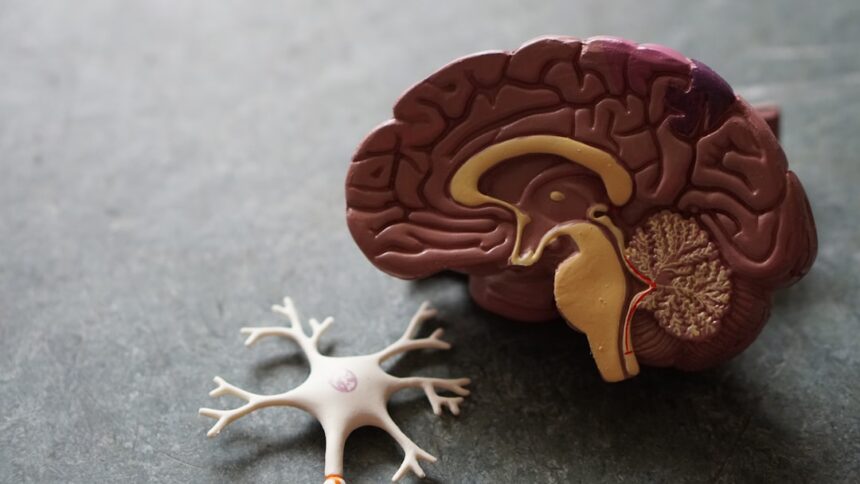Understanding the distinction between a trauma brain and a regulated brain is essential for anyone seeking to navigate the complexities of emotional and psychological well-being. When you experience trauma, your brain undergoes significant changes that can affect your thoughts, emotions, and behaviors. A trauma brain is often characterized by heightened sensitivity to stress, difficulty in emotional regulation, and a persistent sense of danger.
In contrast, a regulated brain operates with a sense of safety and stability, allowing you to process experiences more effectively and respond to challenges with resilience. In a regulated state, your brain functions optimally, enabling you to think clearly, make sound decisions, and engage in healthy relationships. You may find it easier to manage your emotions and respond to stressors without becoming overwhelmed.
Recognizing the differences between these two states can empower you to take steps toward healing and regulation, ultimately leading to a more balanced and fulfilling life.
Key Takeaways
- Trauma can have a significant impact on the brain, leading to dysregulation and difficulty in processing emotions and memories.
- The amygdala plays a key role in the trauma brain, often leading to heightened fear responses and emotional reactivity.
- Trauma can negatively impact the prefrontal cortex and hippocampus, affecting memory, decision-making, and emotional regulation.
- Regulation in the brain is crucial for managing the effects of trauma and promoting overall well-being.
- Therapy, relationships, and social support are important factors in regulating the brain after trauma, and can significantly impact mental health disorders and long-term brain health.
How Trauma Affects the Brain
Trauma can have profound effects on your brain’s structure and function. When you experience a traumatic event, your brain’s response system is activated, leading to the release of stress hormones like cortisol and adrenaline. This biological response can create lasting changes in your brain’s architecture, particularly in areas responsible for memory, emotion, and decision-making.
You may find that your ability to concentrate diminishes or that you become easily startled by everyday stimuli. Moreover, the impact of trauma can lead to alterations in neural pathways, making it challenging for you to return to a state of calm after experiencing stress. The brain’s plasticity means that these changes can be both adaptive and maladaptive; while some adaptations may help you survive in the short term, they can hinder your long-term emotional health.
Understanding how trauma affects your brain is the first step toward reclaiming your mental well-being.
Understanding the Role of the Amygdala in Trauma Brain

The amygdala plays a crucial role in how you process emotions and respond to threats. When trauma occurs, this almond-shaped cluster of nuclei becomes hyperactive, leading to an exaggerated fear response. You may find yourself feeling anxious or fearful even in situations that are not inherently dangerous.
This heightened state of alertness can make it difficult for you to relax or feel safe in your environment. In a trauma brain, the amygdala’s overactivity can overshadow the functions of other brain regions responsible for rational thought and emotional regulation. As a result, you might struggle with feelings of panic or dread that seem disproportionate to the actual circumstances you face.
Recognizing the role of the amygdala in your emotional responses can help you understand why certain triggers elicit strong reactions and guide you toward strategies for calming this part of your brain.
The Impact of Trauma on the Prefrontal Cortex and Hippocampus
| Brain Region | Impact of Trauma |
|---|---|
| Prefrontal Cortex | Reduced volume and activity, impaired executive function, emotional dysregulation |
| Hippocampus | Reduced volume, impaired memory function, increased risk of PTSD |
The prefrontal cortex and hippocampus are two critical areas of the brain that are significantly affected by trauma. The prefrontal cortex is responsible for higher-order functions such as decision-making, impulse control, and emotional regulation. When trauma occurs, this area can become less active, impairing your ability to think clearly and make rational choices.
You may find yourself acting impulsively or struggling to manage your emotions effectively. The hippocampus, on the other hand, plays a vital role in memory formation and retrieval. Trauma can lead to a reduction in the size of the hippocampus, which may result in difficulties with memory and learning.
You might experience flashbacks or intrusive memories related to the traumatic event, making it challenging to focus on the present moment. Understanding how trauma impacts these brain regions can provide insight into your experiences and help you develop strategies for coping with their effects.
The Importance of Regulation in the Brain
Regulation is essential for maintaining emotional balance and overall mental health.
Regulation involves not only managing your emotional responses but also fostering a sense of safety within yourself.
This state allows you to engage with others more effectively and build meaningful connections. Achieving regulation requires awareness of your internal state and the ability to employ strategies that promote calmness and stability.
By prioritizing regulation, you can create a foundation for healing from trauma and enhancing your overall well-being.
Strategies for Regulating the Brain After Trauma

After experiencing trauma, implementing effective strategies for regulating your brain is crucial for recovery. One approach is mindfulness meditation, which encourages you to focus on the present moment without judgment. This practice can help quiet the overactive amygdala and promote a sense of calmness.
You might also explore grounding techniques that anchor you in the present, such as focusing on your breath or engaging your senses through touch or sound. Physical activity is another powerful tool for regulation. Exercise releases endorphins, which can improve your mood and reduce feelings of anxiety.
Whether it’s going for a walk, practicing yoga, or engaging in a sport you enjoy, finding ways to move your body can significantly impact your emotional state. Additionally, establishing a routine that includes regular sleep patterns and healthy eating can support your brain’s ability to regulate itself effectively.
The Role of Therapy in Regulating the Brain
Therapy can be an invaluable resource for regulating your brain after trauma. A trained therapist can help you explore the effects of trauma on your mental health and provide guidance on effective coping strategies. Through various therapeutic modalities—such as cognitive-behavioral therapy (CBT), eye movement desensitization and reprocessing (EMDR), or somatic experiencing—you can learn to process traumatic memories and develop healthier thought patterns.
In therapy, you will have the opportunity to build a safe space where you can express your feelings without fear of judgment. This supportive environment fosters emotional regulation by allowing you to confront difficult emotions at your own pace. As you work through your experiences with a therapist, you may find that your ability to regulate your emotions improves over time, leading to greater resilience in the face of future challenges.
How Relationships and Social Support Can Help Regulate the Brain
The importance of relationships and social support cannot be overstated when it comes to regulating your brain after trauma. Positive social connections provide a sense of belonging and safety that can counteract feelings of isolation often experienced after traumatic events. Engaging with friends or family members who understand your experiences can create an environment conducive to healing.
Moreover, social support can activate areas of the brain associated with feelings of safety and comfort. When you share your experiences with trusted individuals, it not only helps alleviate emotional burdens but also reinforces neural pathways that promote regulation. Building a strong support network allows you to lean on others during difficult times while also providing opportunities for connection that foster resilience.
The Connection Between Trauma Brain and Mental Health Disorders
The relationship between trauma brain and mental health disorders is complex yet significant. Many individuals who experience trauma may develop conditions such as post-traumatic stress disorder (PTSD), anxiety disorders, or depression. The alterations in brain function caused by trauma can contribute to these disorders by affecting how you process emotions and respond to stressors.
Understanding this connection is crucial for recognizing that symptoms stemming from trauma are not merely personal failings but rather manifestations of changes within your brain’s structure and function. By acknowledging this link, you can approach treatment with compassion for yourself while seeking appropriate interventions that address both the psychological and neurological aspects of recovery.
The Long-Term Effects of Trauma on the Brain
The long-term effects of trauma on the brain can be profound and far-reaching. Chronic exposure to stress hormones can lead to structural changes in key areas responsible for memory, emotion regulation, and decision-making. Over time, these changes may manifest as difficulties in relationships, challenges in maintaining employment, or struggles with self-esteem.
However, it is essential to recognize that while trauma can have lasting effects, healing is possible. The brain’s plasticity means that with appropriate interventions—such as therapy, social support, and self-care practices—you have the capacity to rewire neural pathways and foster resilience over time. Understanding the long-term effects of trauma empowers you to take proactive steps toward recovery.
How Understanding Trauma Brain vs Regulated Brain Can Inform Treatment
Gaining insight into the differences between trauma brain and regulated brain can significantly inform treatment approaches tailored to your needs. By recognizing how trauma has impacted your brain’s functioning, you can work collaboratively with mental health professionals to develop targeted strategies for healing. This understanding allows for more personalized treatment plans that address both emotional regulation and cognitive processing.
Additionally, being aware of these distinctions enables you to advocate for yourself during therapy or support groups. You can articulate your experiences more effectively when you understand how trauma has shaped your responses and behaviors. Ultimately, this knowledge fosters empowerment as you navigate your healing journey, equipping you with tools to cultivate a regulated state that promotes lasting well-being.
In conclusion, understanding the dynamics between trauma brain and regulated brain is essential for anyone seeking healing from traumatic experiences. By exploring how trauma affects various areas of the brain and implementing strategies for regulation—such as therapy and social support—you can embark on a path toward recovery that honors both your experiences and your potential for resilience.
In exploring the intricate dynamics between a trauma-affected brain and a regulated brain, it’s essential to consider the insights provided by various psychological resources. One such resource is an article available on Unplugged Psych, which delves into the nuances of how trauma can alter brain function and the pathways to achieving a more regulated state. This article offers a comprehensive overview of the mechanisms at play and strategies for fostering resilience and healing. For a deeper understanding, you can read more about these concepts by visiting the Unplugged Psych website.
🧠 Your Trauma Is Rewiring Your Brain: Here’s How to Undo It | A Neuroplasticity & Somatic Guide
FAQs
What is the difference between a trauma brain and a regulated brain?
A trauma brain is characterized by dysregulation in the nervous system, leading to heightened stress responses, emotional reactivity, and difficulty in self-regulation. On the other hand, a regulated brain is able to effectively manage stress, regulate emotions, and maintain a sense of balance and stability.
What are the effects of trauma on the brain?
Trauma can have significant effects on the brain, including alterations in the amygdala, hippocampus, and prefrontal cortex, which are involved in emotional regulation, memory, and decision-making. These changes can lead to symptoms such as hypervigilance, flashbacks, and difficulty in forming new memories.
How does a regulated brain respond to stress compared to a trauma brain?
A regulated brain is able to respond to stress in a more adaptive manner, utilizing coping strategies and maintaining a sense of control. In contrast, a trauma brain may exhibit heightened stress responses, leading to emotional dysregulation and difficulty in managing the impact of stressors.
Can the brain transition from a trauma state to a regulated state?
Yes, with appropriate therapeutic interventions and support, the brain has the capacity to transition from a trauma state to a regulated state. This process may involve neuroplasticity, the brain’s ability to reorganize and form new neural connections, as well as the development of coping skills and emotional regulation strategies.
What are some effective interventions for transitioning from a trauma brain to a regulated brain?
Effective interventions for transitioning from a trauma brain to a regulated brain may include trauma-informed therapy, mindfulness practices, cognitive-behavioral therapy, and somatic experiencing techniques. These approaches aim to address the underlying dysregulation in the nervous system and promote the development of adaptive coping skills.




